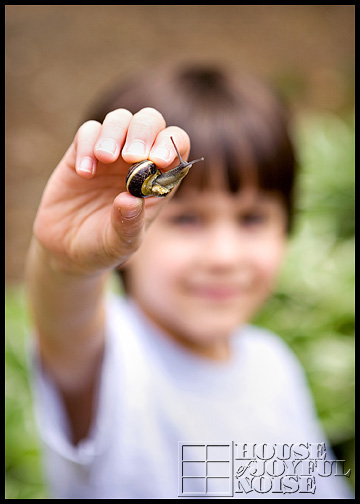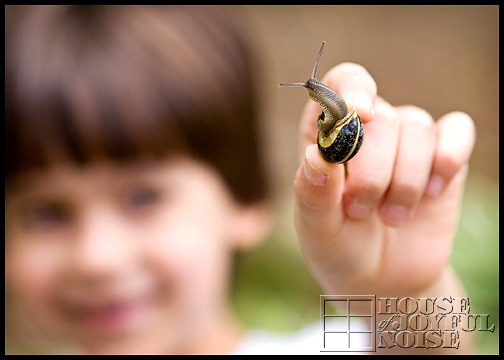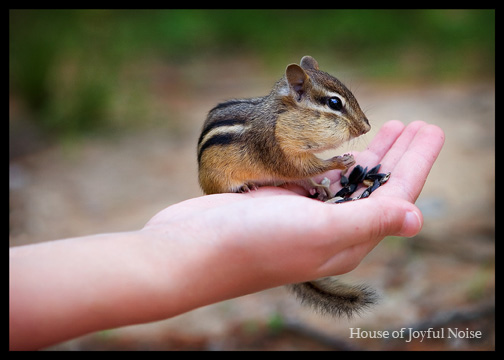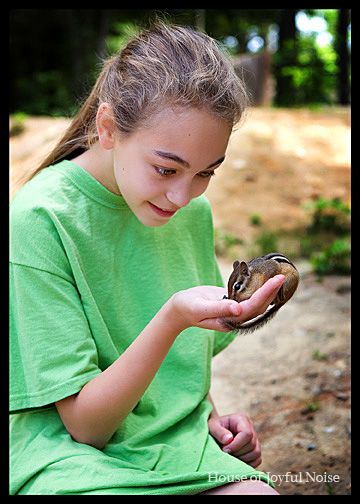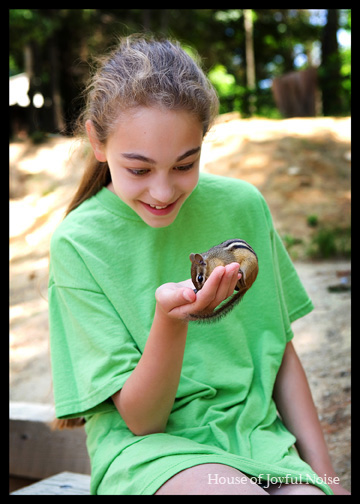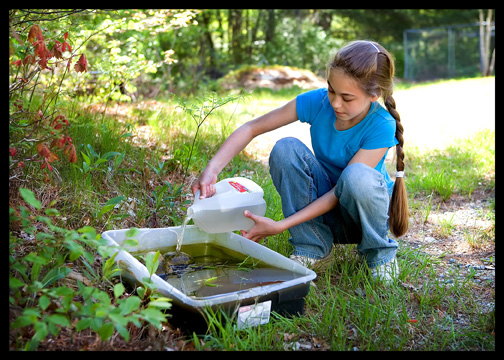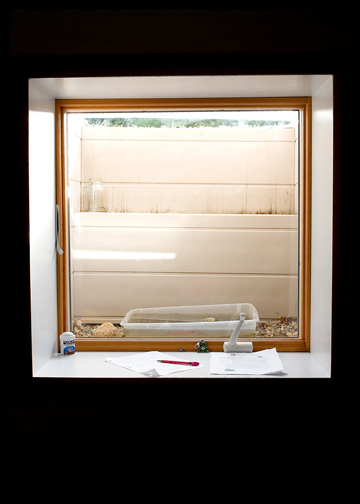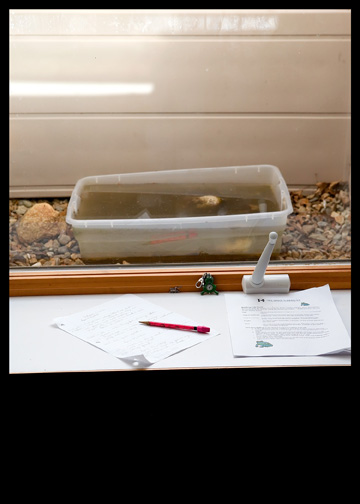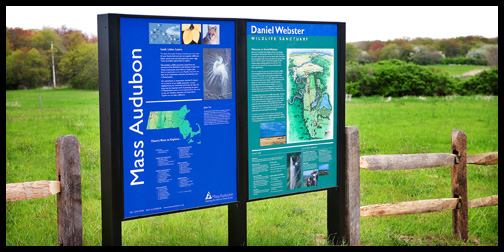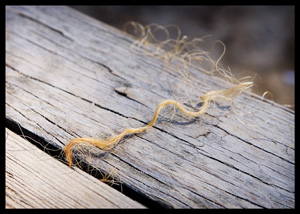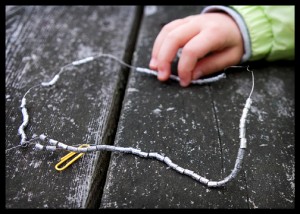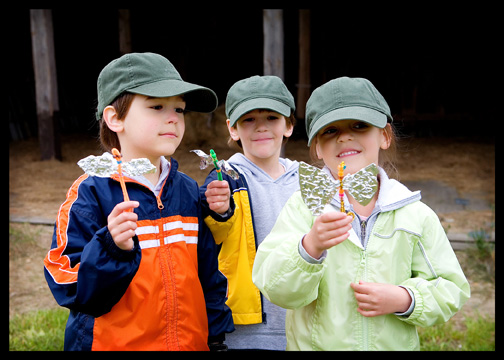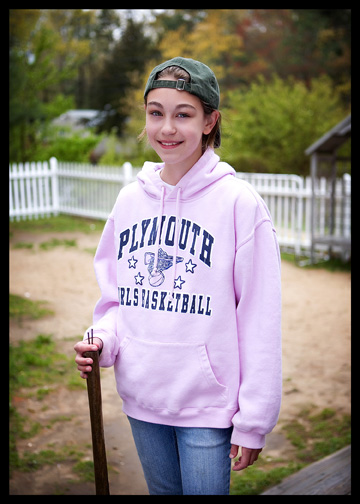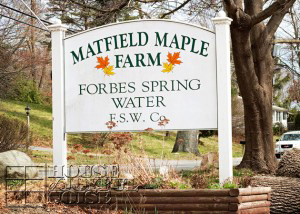
As a kid growing up in western Massachusetts, tapped maple trees and maple farms seemed to be everywhere. Visiting maple sugar houses, and learning about the process of making maple syrup and sugar, were some of my favorite school field trips.
Living a significant shift away from that area now, maple farms are not as common around here. But this was yet another field trip I really wanted to take our kiddos on. We almost arranged one out where I grew up, but the timing of getting out there would have risked missing the end of the season this year. So I found Matfield Maple Farm, less than an hour from us, and we went on a beautiful day! It almost felt wrong from the get-go, with no snow on the ground though! And that was not the only change in the picturesque scenes I have carried in my fond memories of maple sugaring. But I was still excited for the kids to learn all about today’s process of maple sugaring farms.
My visual memories of the maple tapping season are very much like this:
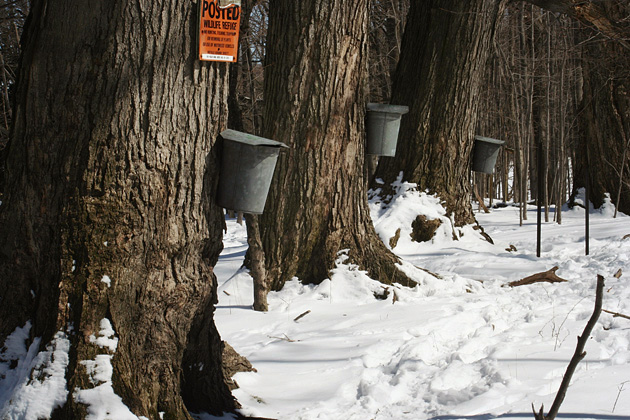 Metal pails on trees, catching the pure sap from the taps that were put into them. And always, as I recall, snow on the ground. After all, one of the best parts of our class trips, was eating syrup on snow, inside the sugar house! Maple tapping season is the few weeks of the tail of winter, and first weeks of spring, when the nights are still cold, but the days are warmer. That’s when the sap starts flowing. But in western MA, near the Berkshires, we always got so much snow in the winter in those years, it simply had not all melted yet, come maple sugaring season.
Metal pails on trees, catching the pure sap from the taps that were put into them. And always, as I recall, snow on the ground. After all, one of the best parts of our class trips, was eating syrup on snow, inside the sugar house! Maple tapping season is the few weeks of the tail of winter, and first weeks of spring, when the nights are still cold, but the days are warmer. That’s when the sap starts flowing. But in western MA, near the Berkshires, we always got so much snow in the winter in those years, it simply had not all melted yet, come maple sugaring season.
MY have things changed. Not only are winters not as true as they used to be throughout the season , but maple trees being tapped for sap at many farms, now look like this:
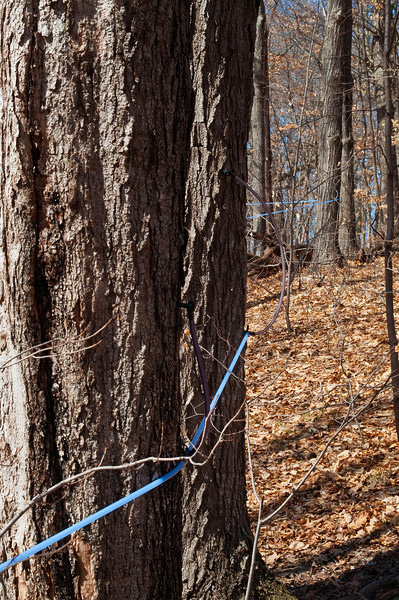
They are drilled and tapped much the same way, but tubes run connecting one tree to another, with all of the sap from all of the trees, running to one place. I realize it’s more time efficient, and time is money after all. But I must say, I really miss the charm of good old fashioned pails on maple trees.
Watching and learning the whole process of how maple sap is collected, and boiled down into pure maple syrup, was still something I wanted my kids to see for themselves. But I really hoped it would be just like how I learned about it, and I was looking forward to taking photos of the pails on the trees! I did have an idea this farm used the more modern method, so it wasn’t a complete surprise. But I was hoping. They did say they also tap with pails, but we didn’t happen to see any.
Still, we were very much enjoying our trip, and it sure was a beautiful day for one. Saturday was when the touring was, so Daddy/Michael was able to come too. It was a family field trip!
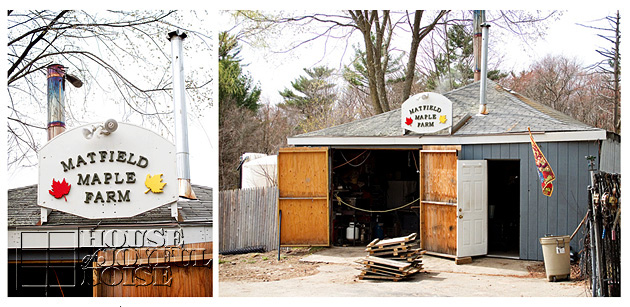 We had a chuckle at their cute sugar shack sign. We’d recognize that shape anywhere! Clever, recycling a basketball backboard into a sign! We just love little family run businesses, and we always do all we can to support them, because we know all about having a little dream, and trying to make it work.
We had a chuckle at their cute sugar shack sign. We’d recognize that shape anywhere! Clever, recycling a basketball backboard into a sign! We just love little family run businesses, and we always do all we can to support them, because we know all about having a little dream, and trying to make it work.
 The kids fed the llamas, while a small crowd of us waited for the tour guide. {JM} was gathering clovers on the ground to feed them too.
The kids fed the llamas, while a small crowd of us waited for the tour guide. {JM} was gathering clovers on the ground to feed them too.
Soon, the owner/tour guide, and his daughter led us out into the woods, as he started telling us about the maple farm.
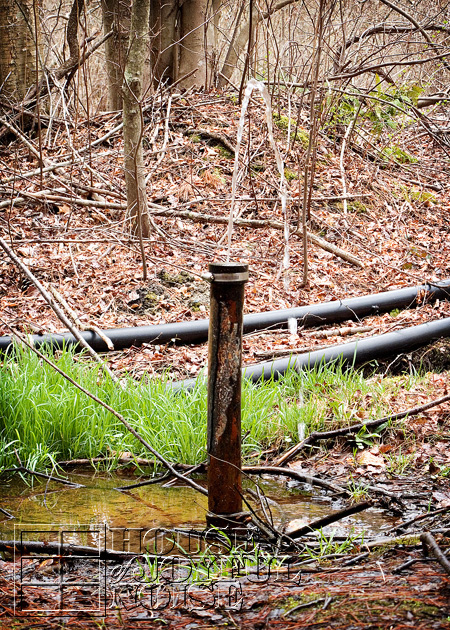
The first stop was this natural spring. Do you see how vibrantly green that grass is? The guide told us that is there even through the winter snow, because of the spring there. Imagine how pretty that must be. BUT….no snow for us! ; )
 We were all offered to get a drink, and taste the fresh spring water. So I told one of my boys, who was going up first, that I wanted to get a photo of him getting some water. But all I got a bum shot!
We were all offered to get a drink, and taste the fresh spring water. So I told one of my boys, who was going up first, that I wanted to get a photo of him getting some water. But all I got a bum shot!
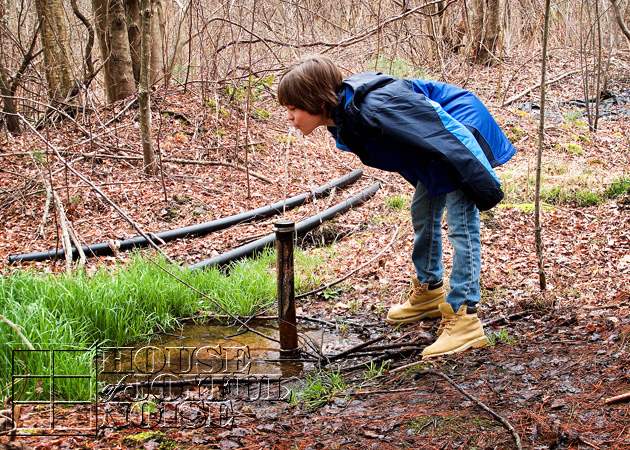 Thankfully I have other kids, and got another chance.
Thankfully I have other kids, and got another chance.
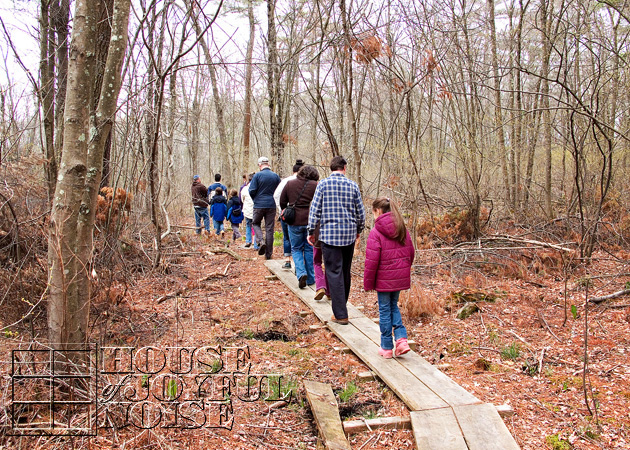 We moved on, following each other on these wood-board paths.
We moved on, following each other on these wood-board paths.
A couple of times, we all had to duck under sap lines. I personally thought of doing the limbo, but didn’t want to show off. ; )
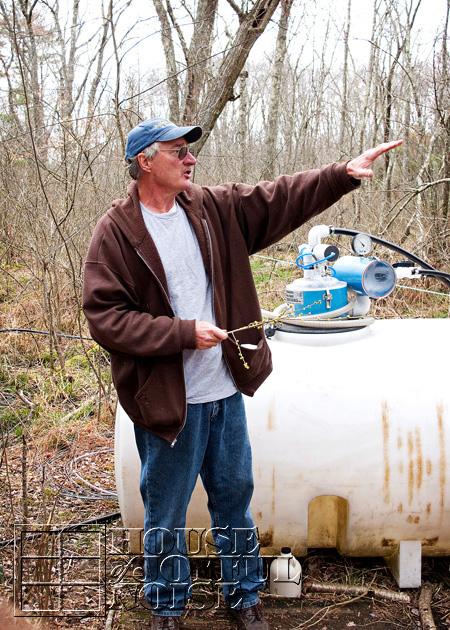
Next we stopped at the 450 gallon gathering tank, where all the lines run to. Here, the guide told us about the easiest way to know what trees to tap. They go out scouting trees in the warmer weather, and mark the maples, when the trees have leaves. That is when they can quite obviously tell which trees are of the maple variety. As opposed to the winter / early spring, when it’s harder to tell which are which. See the jug down by his feet? In it was a little treat for us all.
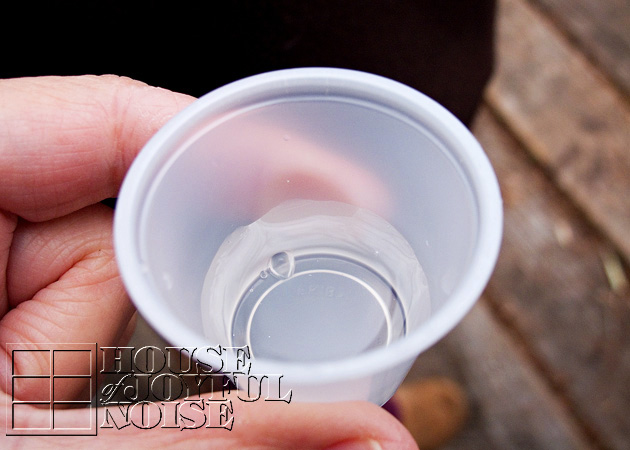 He passed out little sampling cups, and poured us all some pure maple sap, straight out of the trees. If you have never seen or tried it, maple sap looks just like water, and tastes almost as refreshing, with just a hint of sweet. Sap straight from the sugar maple tree is about 98 percent water and 2 percent sugar, as well other nutrients, and minerals. Maple syrup is derived by boiling it all down to the point where the process of evaporation leaves only about 33 percent of water and 67 percent sugar.
He passed out little sampling cups, and poured us all some pure maple sap, straight out of the trees. If you have never seen or tried it, maple sap looks just like water, and tastes almost as refreshing, with just a hint of sweet. Sap straight from the sugar maple tree is about 98 percent water and 2 percent sugar, as well other nutrients, and minerals. Maple syrup is derived by boiling it all down to the point where the process of evaporation leaves only about 33 percent of water and 67 percent sugar.
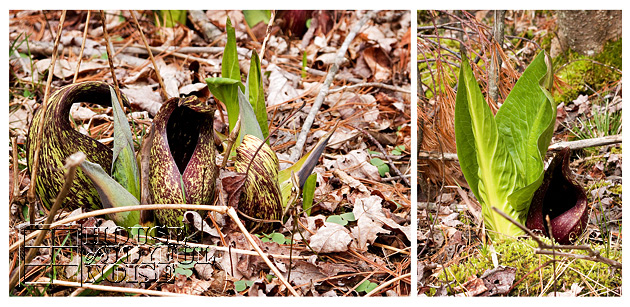 Do you know what this is? It’s called Skunk Cabbage. He broke off a piece for us to smell, but recommended we don’t let it touch our nose, whilst sniffing! It’s named well. It stinks terribly!
Do you know what this is? It’s called Skunk Cabbage. He broke off a piece for us to smell, but recommended we don’t let it touch our nose, whilst sniffing! It’s named well. It stinks terribly!
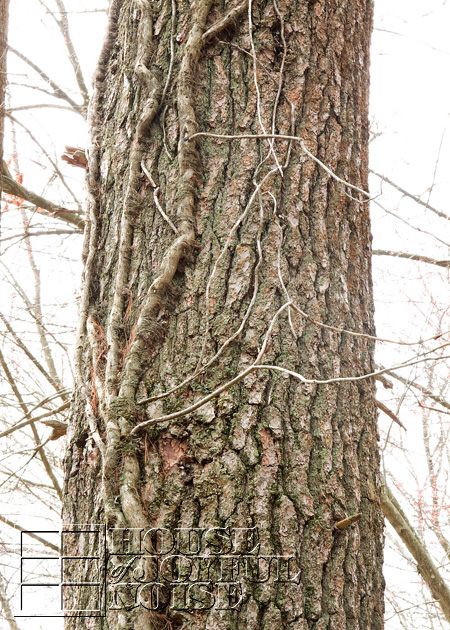
A poison Oak tree, evidences by the poisonous vine plant climbing it.
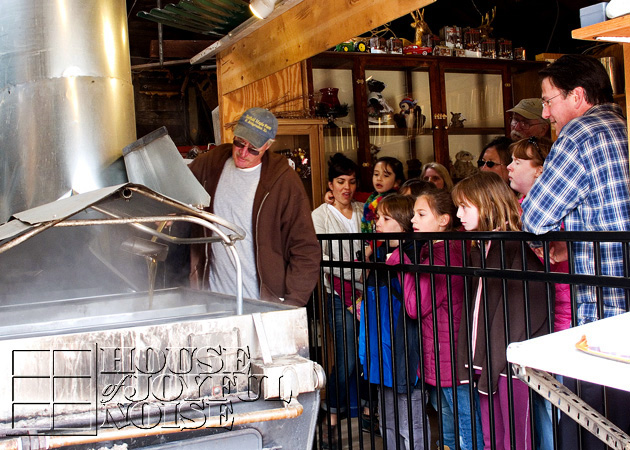 Back at the sugar shack, we all learned more about the process of boiling down the sap to the right consistency. This is a wood burning boiler, bringing the sap to the boiling point of 212 degrees. When it does boil, the steam rises up out of the sugar shack, and the syrup gets thicker and sweeter.
Back at the sugar shack, we all learned more about the process of boiling down the sap to the right consistency. This is a wood burning boiler, bringing the sap to the boiling point of 212 degrees. When it does boil, the steam rises up out of the sugar shack, and the syrup gets thicker and sweeter.
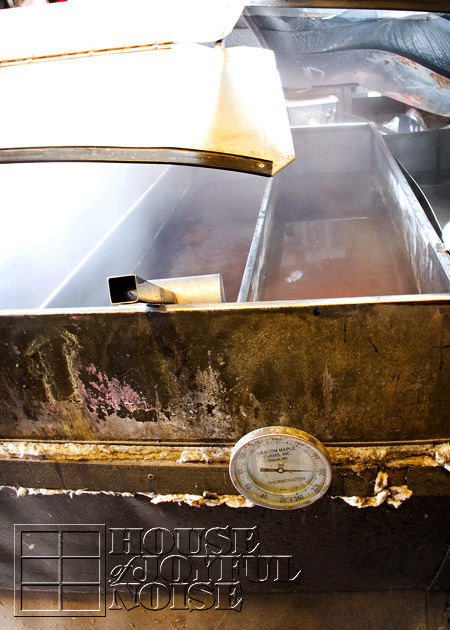
To the right of this shot is the pre-heating waiting area. As it is moved into the boiling area, and getting to increasing thickened consistencies, it is moved over to the next holding well.
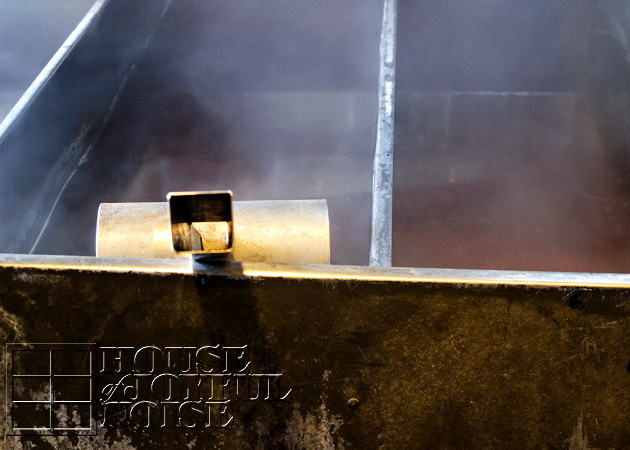
We found it interesting that it takes 40 gallons of maple tree sap, to make one single gallon of maple syrup!
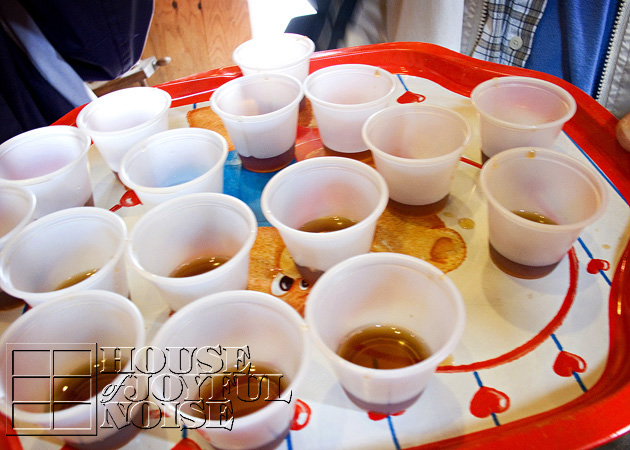 Samples of the finished product were shared with us as well. The kids were sure to get their own little cup, and immediately began asking about plans to have pancakes for dinner. Honestly, there is no comparison between pure maple syrup, and the ‘syrup’ for pancakes that they sell at the grocery store, which is actually made of corn syrup!
Samples of the finished product were shared with us as well. The kids were sure to get their own little cup, and immediately began asking about plans to have pancakes for dinner. Honestly, there is no comparison between pure maple syrup, and the ‘syrup’ for pancakes that they sell at the grocery store, which is actually made of corn syrup!
 Another favorite part of field trips is always the gift shop! Here, what they sold was right behind us right there in the sugar shack, on some shelves. Of course they sold pure maple syrup in fancy bottles, and there was some maple sugar candy as well, which is made by bringing the boiling process even further, removing an even higher percentage of water, until the sugar starts to crystallize. (I think.)
Another favorite part of field trips is always the gift shop! Here, what they sold was right behind us right there in the sugar shack, on some shelves. Of course they sold pure maple syrup in fancy bottles, and there was some maple sugar candy as well, which is made by bringing the boiling process even further, removing an even higher percentage of water, until the sugar starts to crystallize. (I think.)
A quick funny story about maple sugar candy: As a kid on maple sugar house field trips, I always spent my spending money on buying maple sugar candy for my father.Every time. And I’d be so excited to give it to him, because I was under the impression he really loved it. Then about a year or so ago he and I were discussing maple sugar houses, and I found out he hates maple sugar candy! He says it’s far too sweet for him. But it just goes to show you how happy he pretended to be, so as not to hurt my feelings as a kid. (Thanks, Dad. : )
I didn’t buy him any candy this time.
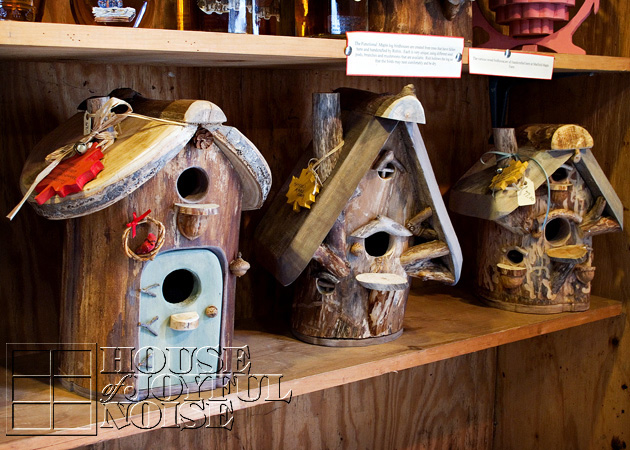 We thought these bird houses were cute too.
We thought these bird houses were cute too.
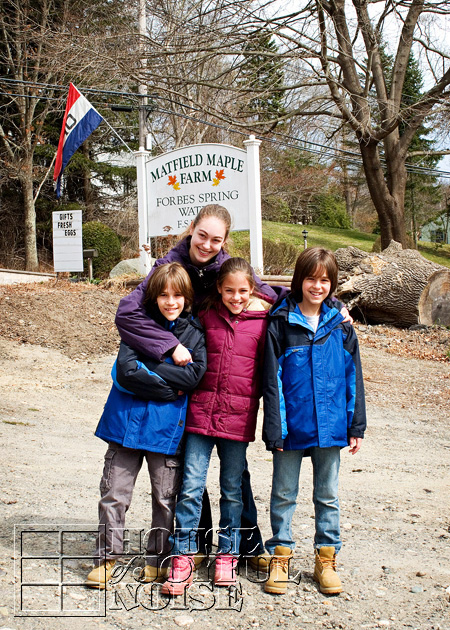
The kids had a great time, as you can tell by the smiles on their faces.
 On the way home, we stopped lakeside, and ate our nice picnic lunch with the swans.
On the way home, we stopped lakeside, and ate our nice picnic lunch with the swans.
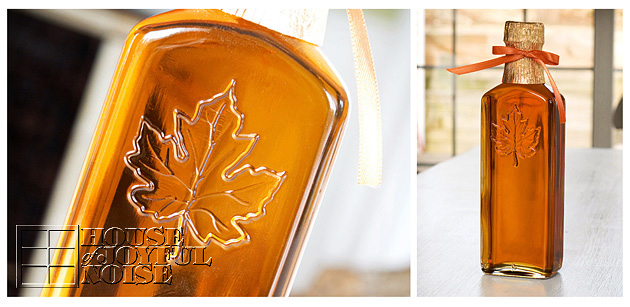 It was a wonderful day, and along with the memories, we brought home a bottle of pure maple syrup. Chosen not only for it’s contents, but of course for the fabulous bottle, with an embossed maple leaf in the glass! I already have ideas of what I can do with it, for detail home decor come Autumn. But before then, we have many pancakes and waffles to eat, drizzled with our pure maple syrup!
It was a wonderful day, and along with the memories, we brought home a bottle of pure maple syrup. Chosen not only for it’s contents, but of course for the fabulous bottle, with an embossed maple leaf in the glass! I already have ideas of what I can do with it, for detail home decor come Autumn. But before then, we have many pancakes and waffles to eat, drizzled with our pure maple syrup!
A planned meal for that night was quickly kicked to the curb, and we satisfyingly filled ourselves with blueberry pancakes. It was the kid’s first maple sugar house trip, but it won’t be their last! We will be getting to a maple sugar farm in the next couple of years, that still does things the good old fashioned way! But this place was still worth the trip, and no doubt the memories and lessons will be as sticky as the syrup on their plates.
I know not everyone lives in the right climate, but have you all been to a maple sugar shack lately? Did they use the old or new method, and what your thoughts on the two? We’d enjoy it if you shared.

